Alfajores Argentinos are popular sandwich cookies from Argentina made with simple shortbread dough and stuffed with rich dulce de leche. This simple, melt-in-your-mouth cookie is perfect for an afternoon treat or a gift and is easy to make at home!
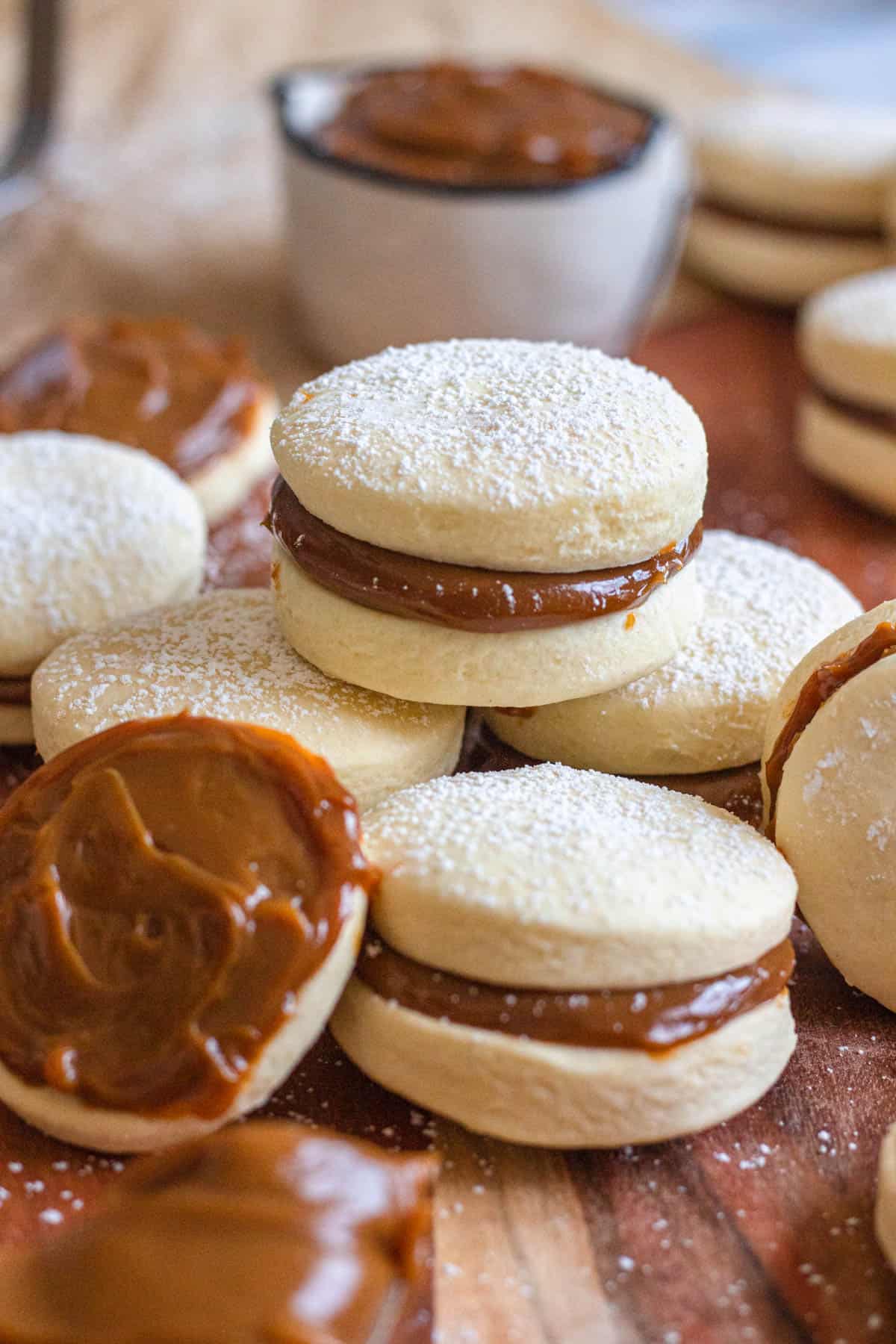
Hello Reader! I try my hardest to research recipes as best as I can before posting to ensure I am representing each culture correctly. If this recipe is from your country and I have made a mistake or you have suggestions for how to make it more authentic, I would love to hear! Please leave a comment below letting me know what should be different, and I will rework the recipe. It is always my intention to pay homage and respect to each cultural dish that I cook. Thanks for reading!
Alfajores are a traditional treat that has stood the test of time. They are so simple, rich and delicious, and easy to customize to fit any occasion.
The base is a simple, soft shortbread cookie that melts in your mouth as soon as you take a bite. The simple butter flavor is complimented perfectly by rich dulce de leche that is spread on the inside.
The toughest part of these alfajores cookies is the patience it takes to get them just right. This recipe calls for chilling the dough twice to help them keep the right texture and shape. If you make homemade dulce de leche, that adds to the process–but luckily there are plenty of options on the market.
You can’t go wrong with this treat. Alfajores go great with a cup of coffee in the afternoon or it can be dressed up and served on any special occasion or given as a gift.
If you are in search of the perfect, buttery cookies to serve guests, look no further than these Alfajores Argentinos. These are currently one of my favorite cookies!
Recipe Origins
Alfajores come from South America. You can find them all over Spain, Mexico, and Argentina.
The idea behind these simple cookies dates back to the Middle East. It is believed the name “alfajor” comes from the Arabic word “alaju” which means “stuffed”. At that time it was a round cookie, stuffed with dried fruit and rolled in sugar or possibly nuts.
The Moors of the Middle East brought this treat with them to Spain and Spaniards brought the cookie to Argentina and Uruguay.
Each region in South America has its own version of Alfajores but, in general, they are considered dulce de leche sandwich cookies, and rarely do they have a different filling. Some are dipped in chocolate to make chocolate alfajores, others are rolled in nuts or shredded coconut. In the past, some were stuffed with marmalade! But dulce de leche is now the most popular and common filling.
Today you can find bakeries all over Argentina and South America that specialize in this traditional cookie and mass produce them for tourists. Alfajores are a popular treat to pick up for an afternoon snack or for special celebrations.
This specific recipe for alfajor cookies was taught to me during an Airbnb cooking class that I took while visiting Buenos Aires, Argentina! The class with Vicky taught me how to make amazing Argentinian Empanadas, a spicy empanada dipping sauce, a delicious lentil stew (guiso de lentejas) and these Alfajores Argentinos! This recipe is shared with Vicky’s permission. If you are traveling to Argentina, make sure to book her amazing cooking class on Airbnb.
Why Make This Recipe
- Tasty Treat: Who doesn’t love shortbread and dulce de leche? It’s a match made in sweet, buttery heaven.
- Customizable: You can make these alfajores cookies any size, any shape, and add different additions like coconut, nuts, or chocolate. Make them as fancy or as simple as you like. Plus they are perfect for just about any occasion!
- Taste of Argentina: These dulce de leche cookies have been mass-produced for tourists to purchase and take home to their country. While you may not have plans to visit Argentina any time soon, you can still enjoy a perfect Argentinian treat by making these Alfajores Argentinos at home.
What Do I Need To Make This Recipe
Ingredients
Here is a visual overview of the ingredients in the recipe. Scroll down to the recipe at the bottom for quantities.
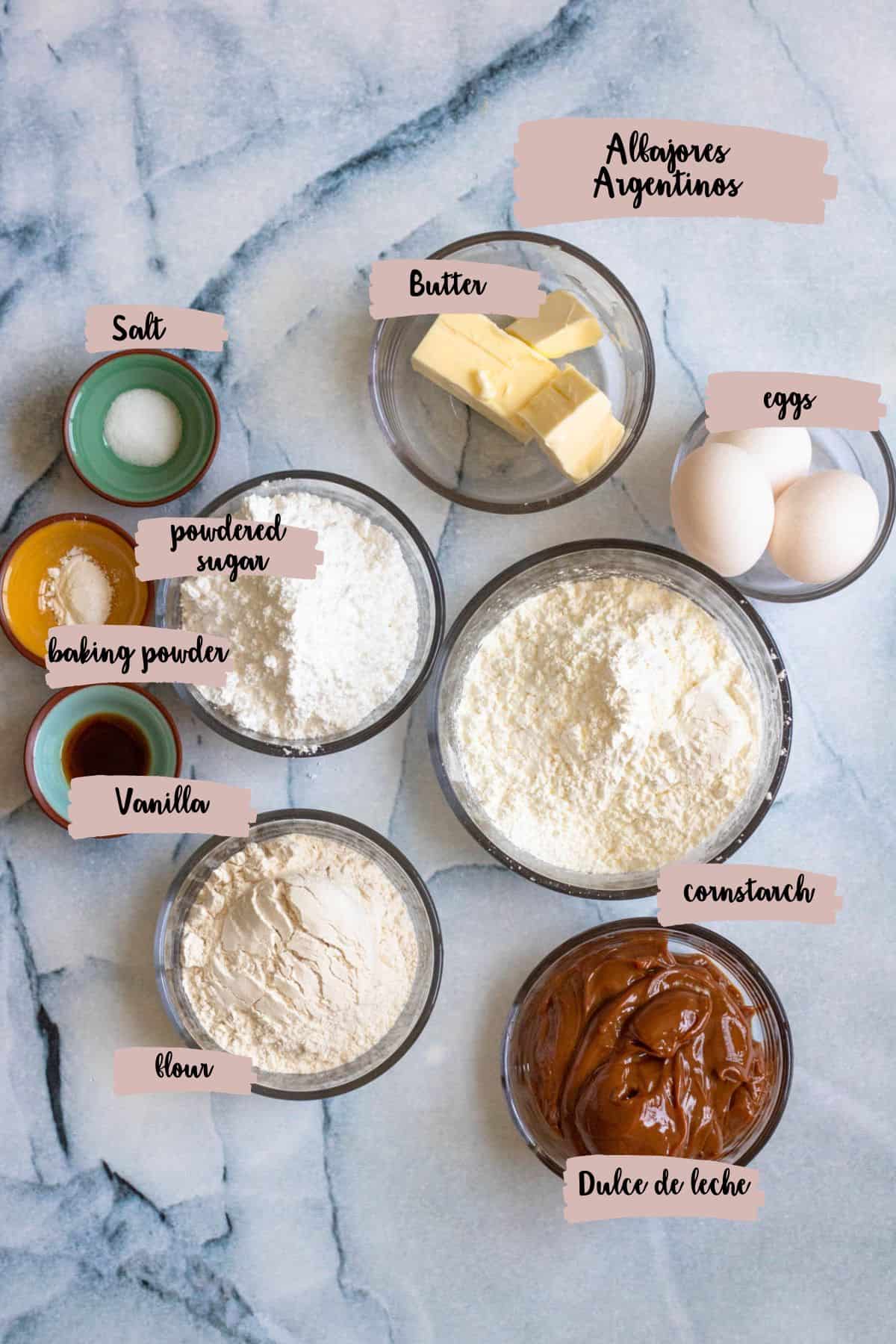
- Butter: It’s always a good idea to use unsalted butter when baking so you can control the amount of salt in the dish.
- Cornstarch: There is quite a bit of cornstarch in this recipe. The powdered sugar and cornstarch are what give the cookies a super light and airy texture that melts when you bite into them.
- Dulce de Leche: There are many brands of dulce de leche available for purchase. You want a very thick dulce de leche that won’t run off the side of the cookie. Look for pastry Dulce de leche or make your own using this recipe for Instant Pot Dulce de Leche!
What is Dulce de Leche?
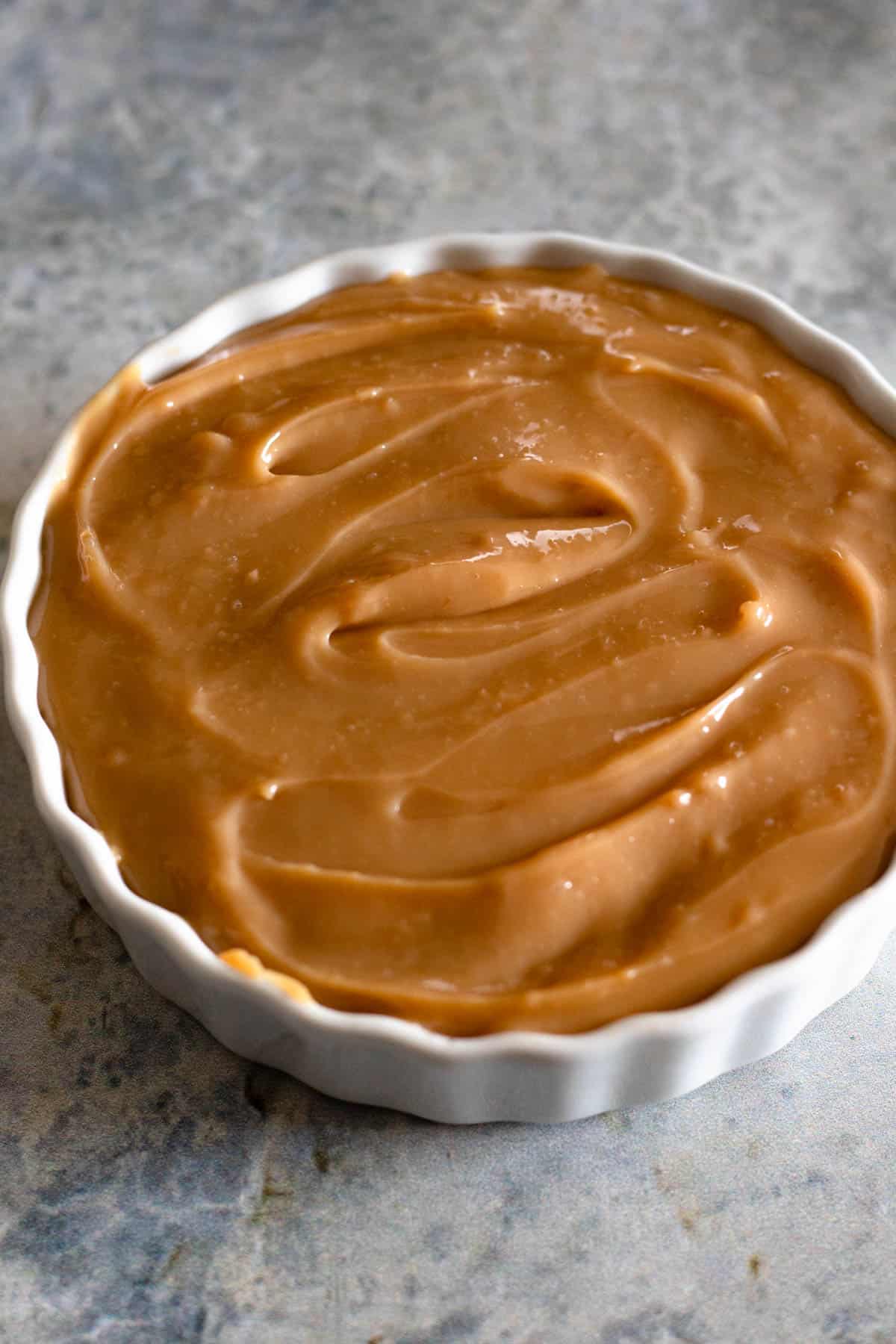
Dulce de leche is a thick, sweet filling made with sweetened condensed milk, sugar, and baking soda. It is slowly cooked over several hours, helping the milk to slowly caramelize. In fact, dulce de leche is a close relative of caramel and, like caramel, you can find many different varieties.
Dulce de leche is a bit sweeter than caramel with more of a milky flavor.
For this recipe, you want to find a dulce de leche that is thick enough to spread and stay put. It’s easy to find a jar for sale online or at a Latin grocery store. I bought this brand from Amazon and it worked perfectly! If you are patient you could also make your own.
Add the all-purpose flour, cornstarch, baking powder, and salt to your wet ingredients. Use a wooden spoon or spatula to mix until everything is combined into a dough.
In a pinch, this recipe is also delicious with caramel, though not exactly the same.
Tools
- Electric Mixer: It is possible to make this recipe by hand, but an electric mixer makes it easy to get the sugar and butter nice and fluffy. You can also make this recipe in a stand mixer using the paddle attachment.
- Cookie Cutters: 2” Cookie cutter. I used these cookie cutters!
How to Make This Recipe
Step One: Cream the Butter and Sugar
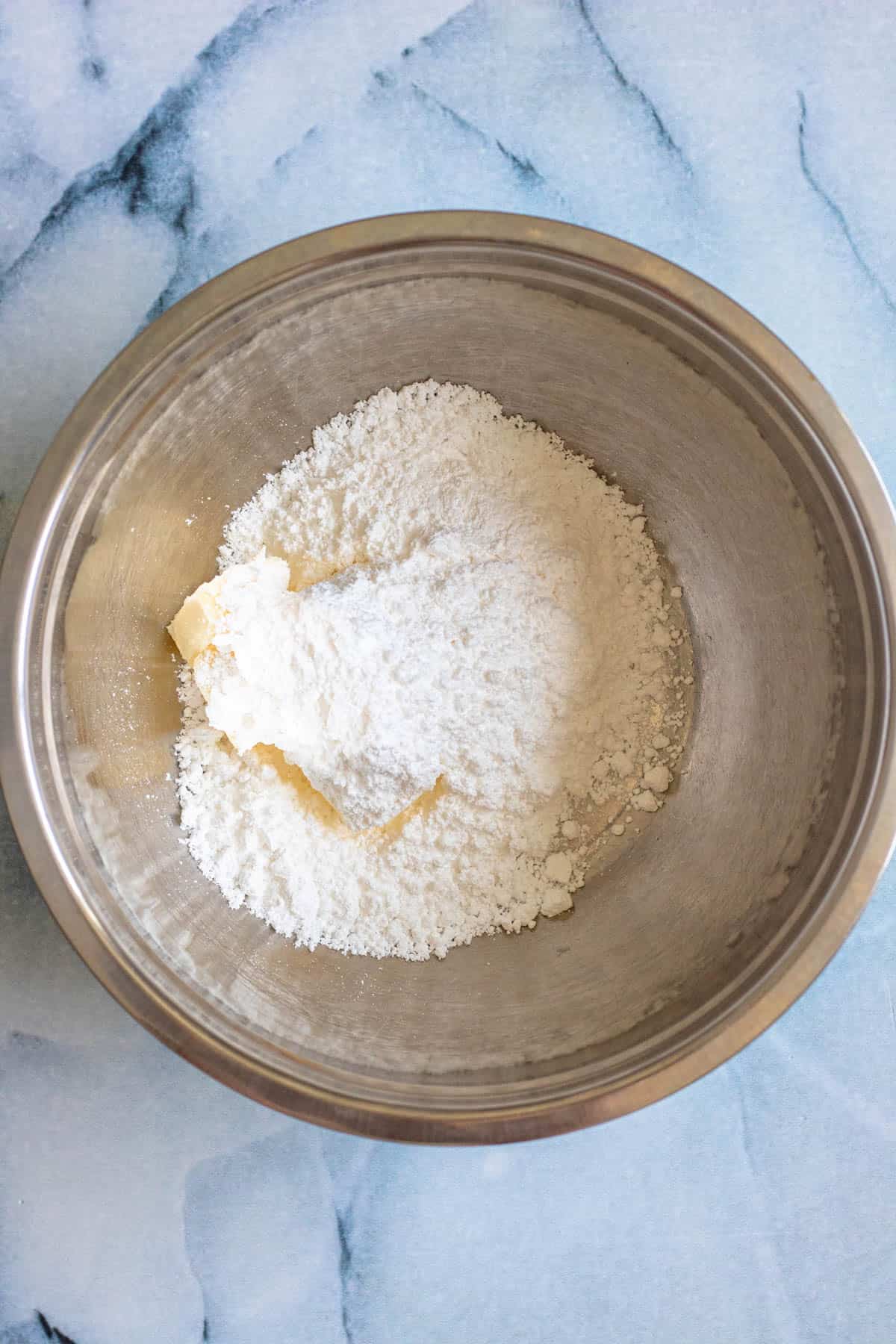

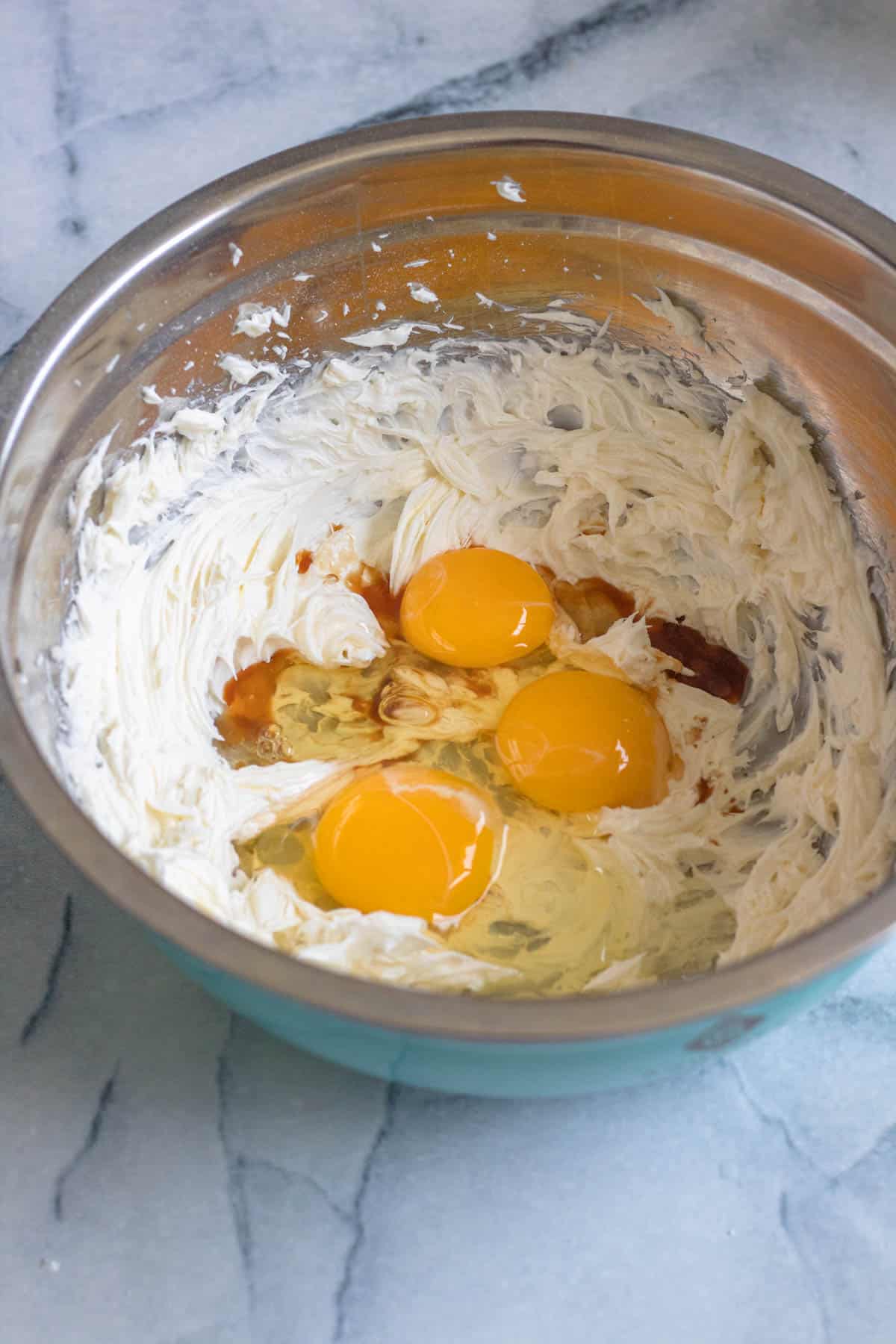
In a large bowl, use an electric hand mixer to combine the softened butter and powdered sugar on medium speed. Mix for about 2 minutes until light and fluffy.
Once combined, add the vanilla extract and eggs (2 whole eggs + 1 yolk). Mix again until combined.
Step Two: Add the Dry Ingredients, Then Chill
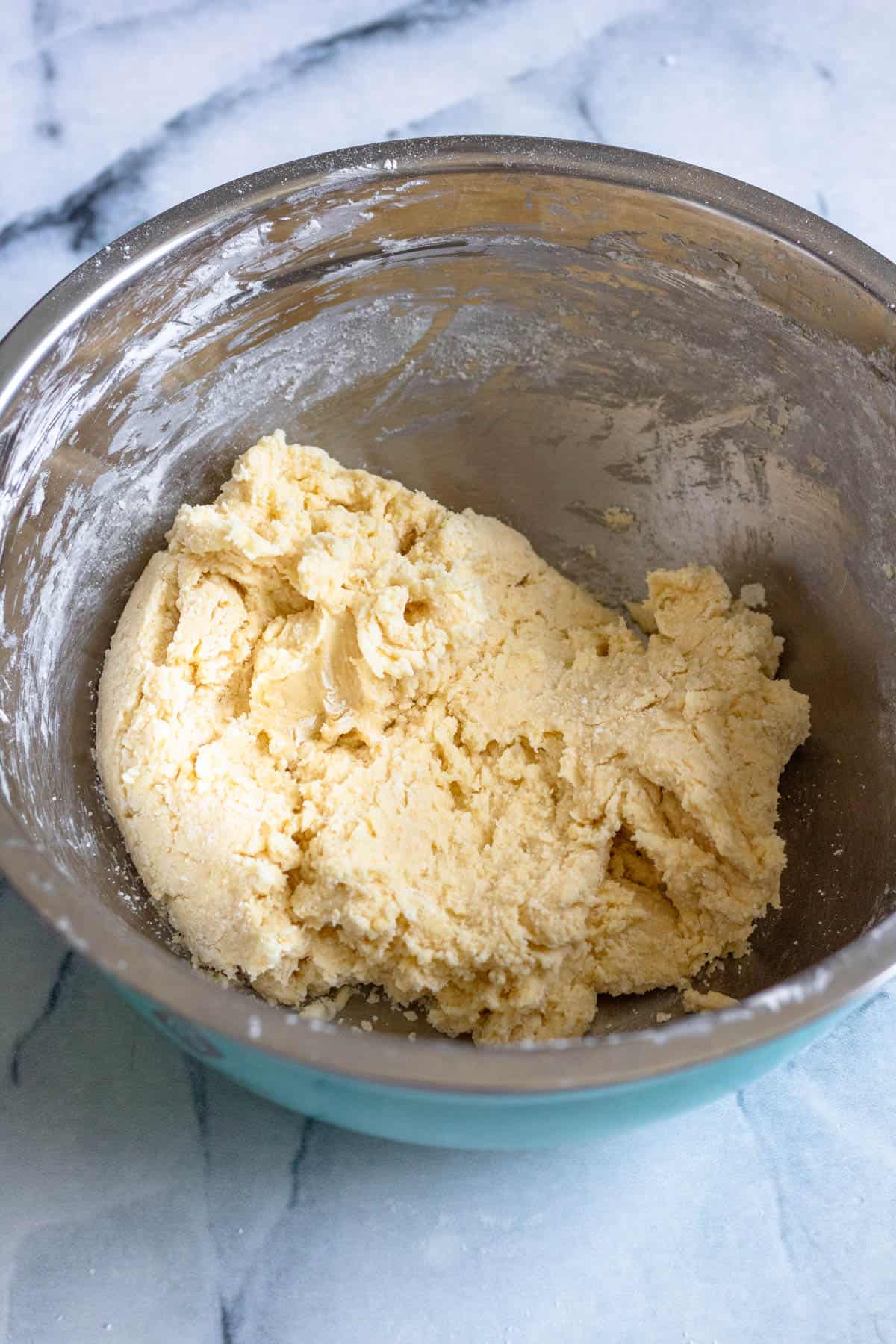
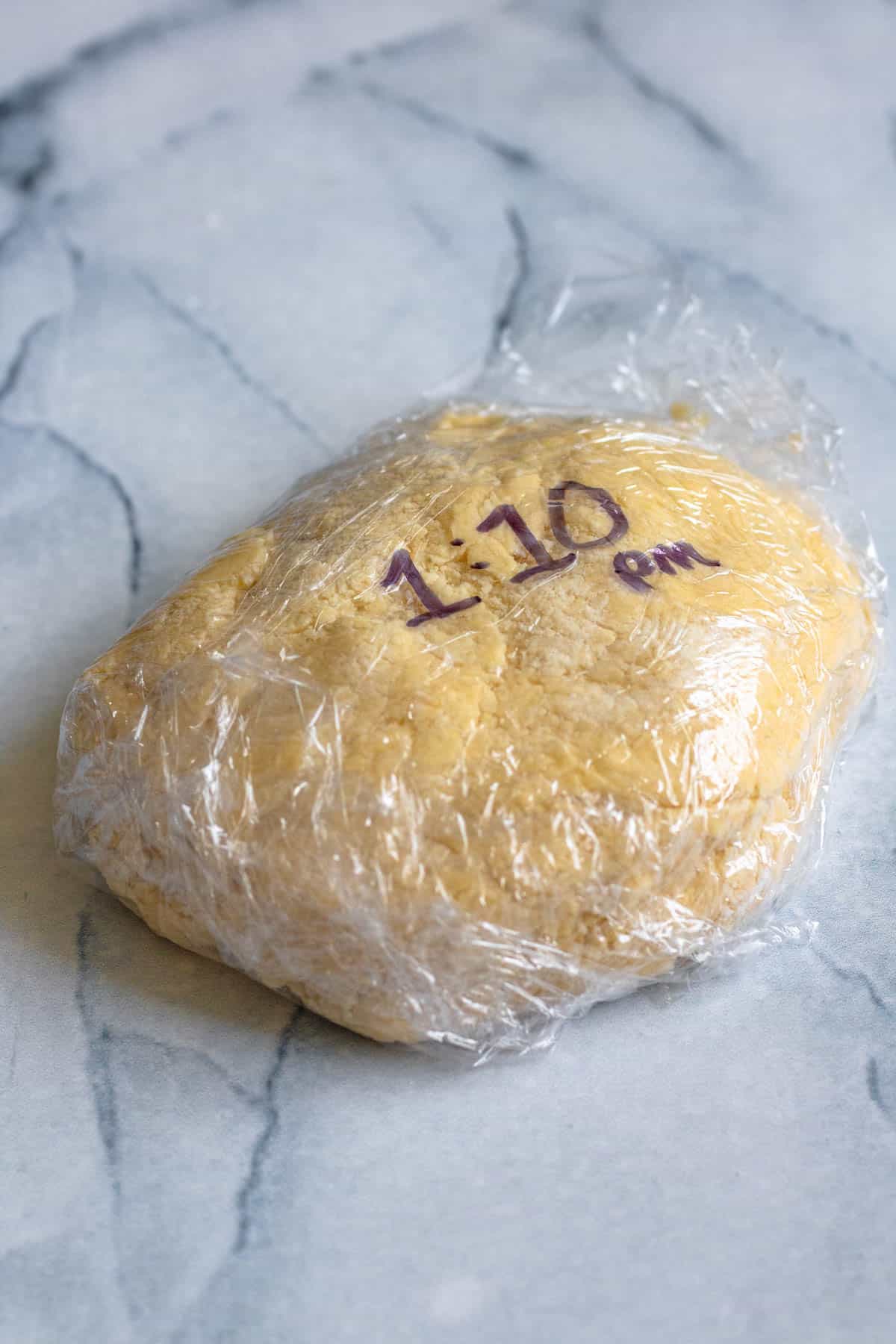
Add the all-purpose flour, cornstarch, baking powder, and salt to your wet ingredients. Use a wooden spoon or spatula to mix until everything is combined into a dough.
You do not need to knead the cookie dough, simply gather it together into a ball. Wrap the soft dough in plastic wrap and place in the fridge for an hour.
Step Three: Cut the Cookies
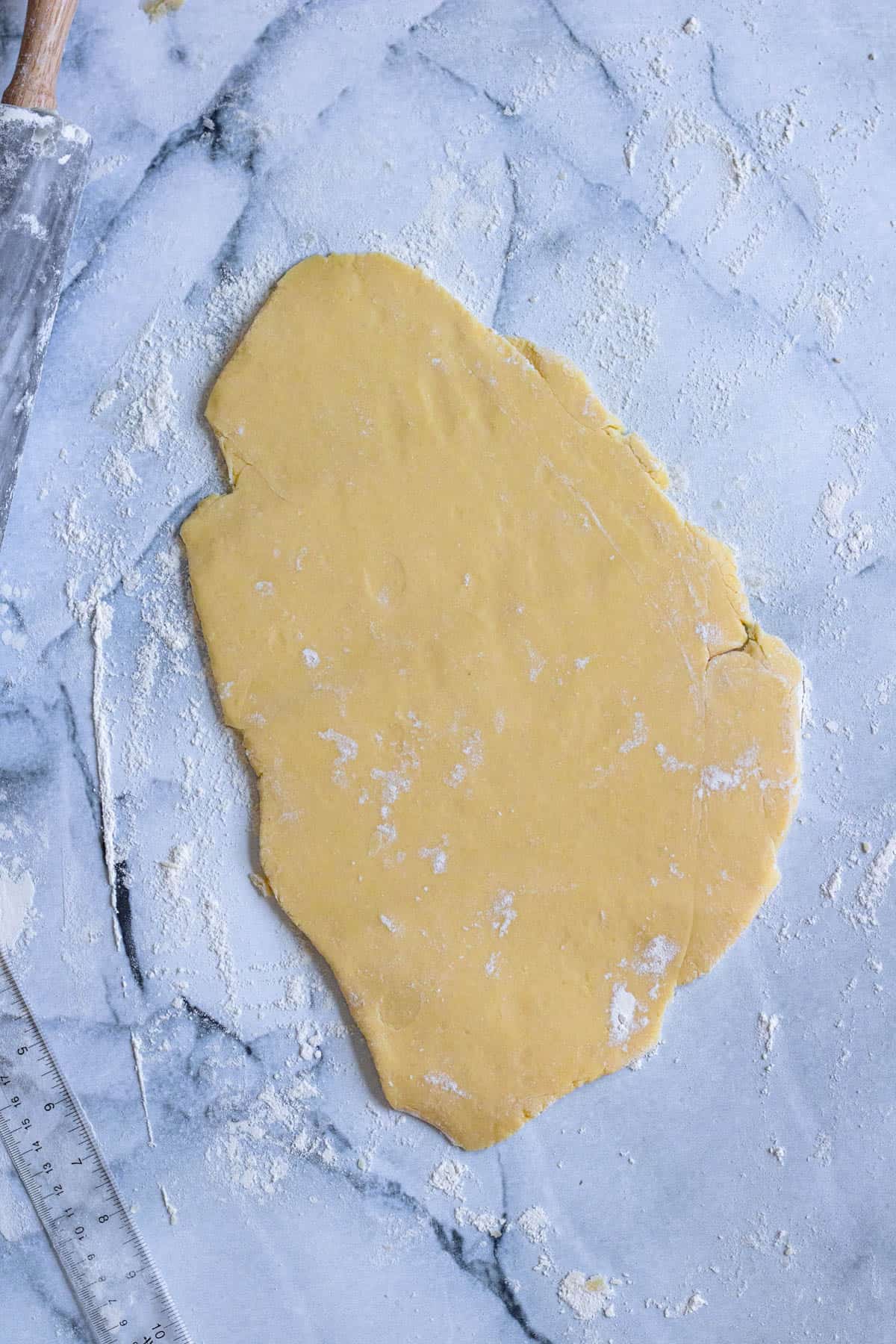
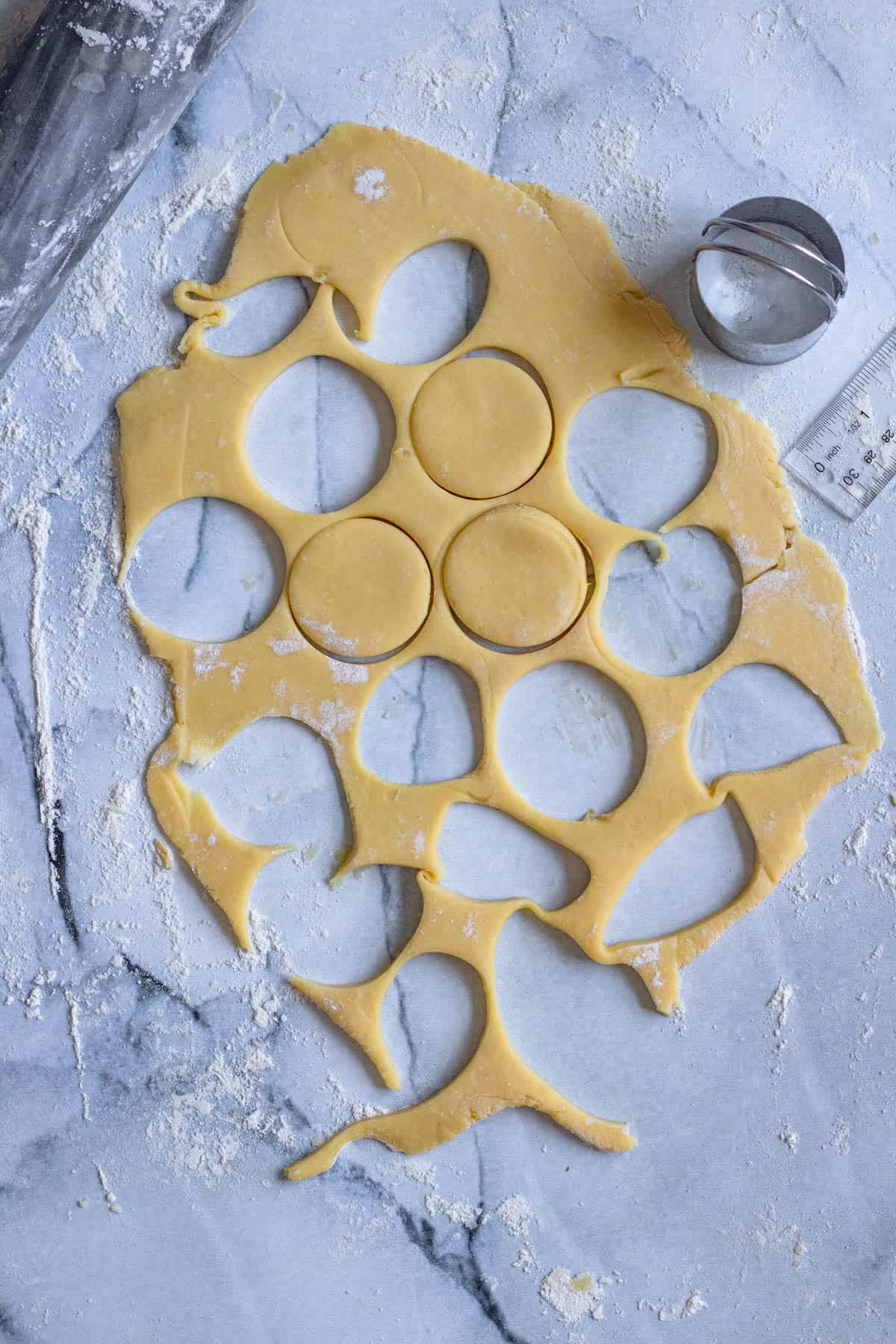
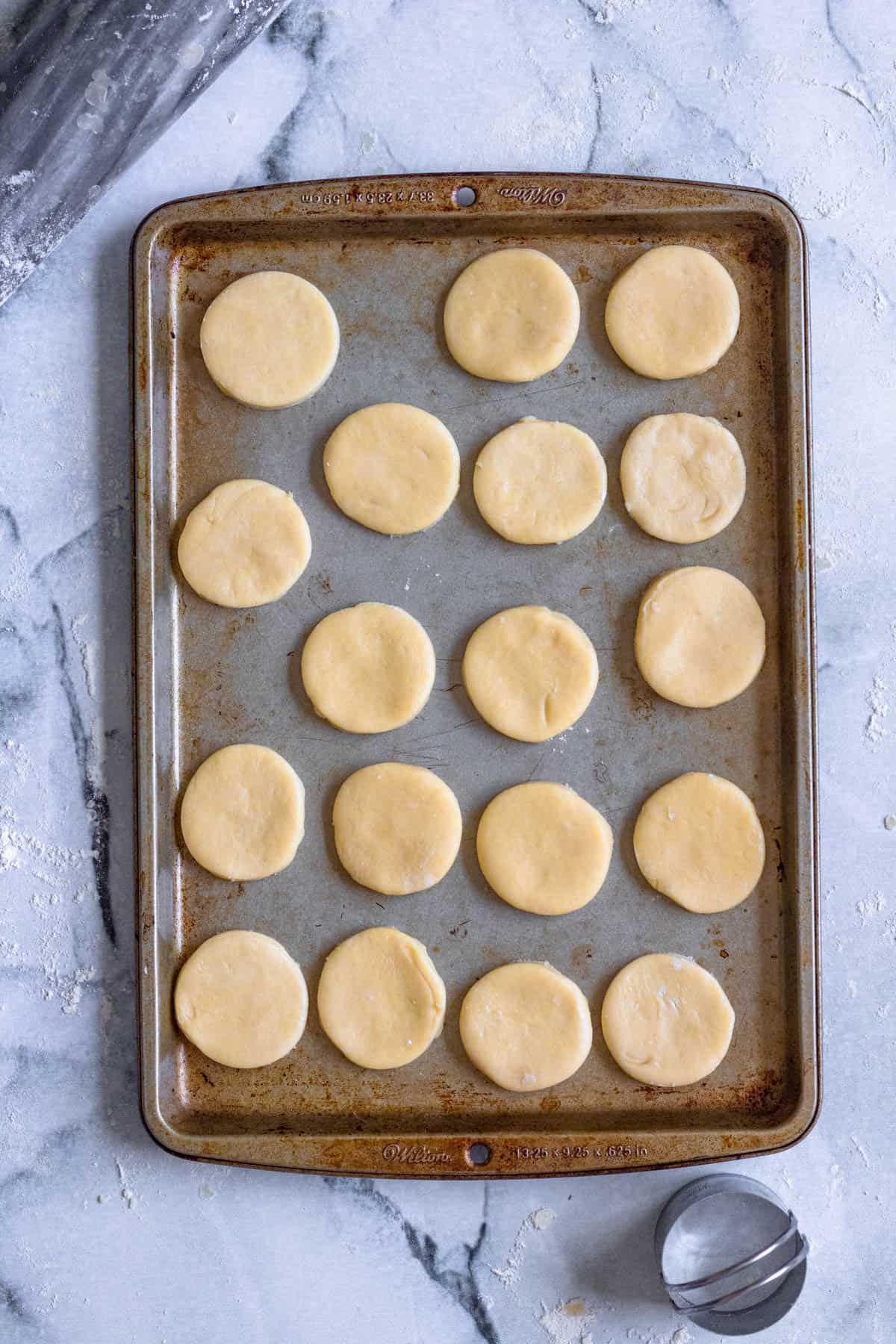
Preheat the oven to 325 degrees Fahrenheit.
When chilled, roll the dough out to ¼” thick. Then cut the alfajores into 2” circles. I used these cookie cutters!
Place them on an unlined, ungreased cookie sheet or on parchment paper and chill for an additional 5 minutes in the fridge to ensure they do not spread.
Step Four: Bake and Fill

Once chilled, place the alfajores in the oven for 7-8 minutes until they are golden brown around the edges.
Allow the cookies to cool, then fill them with dulce de leche and create sandwiches. Enjoy!
Different Variations to Try
There are so many different varieties of alfajores! It’s common to find them rolled in coconut or walnuts or dipped in chocolate. They are almost always filled with dulce de leche, but you could try different fillings if you like.
You could also cut these cookies into different shapes and sizes. Make sure to adjust your cooking time if you make them much smaller.
Many chefs add a bit of lemon zest to the batter of the cookies. Feel free to experiment with your own but don’t add too much or your cookies will taste like lemon cookies.
Expert Tips
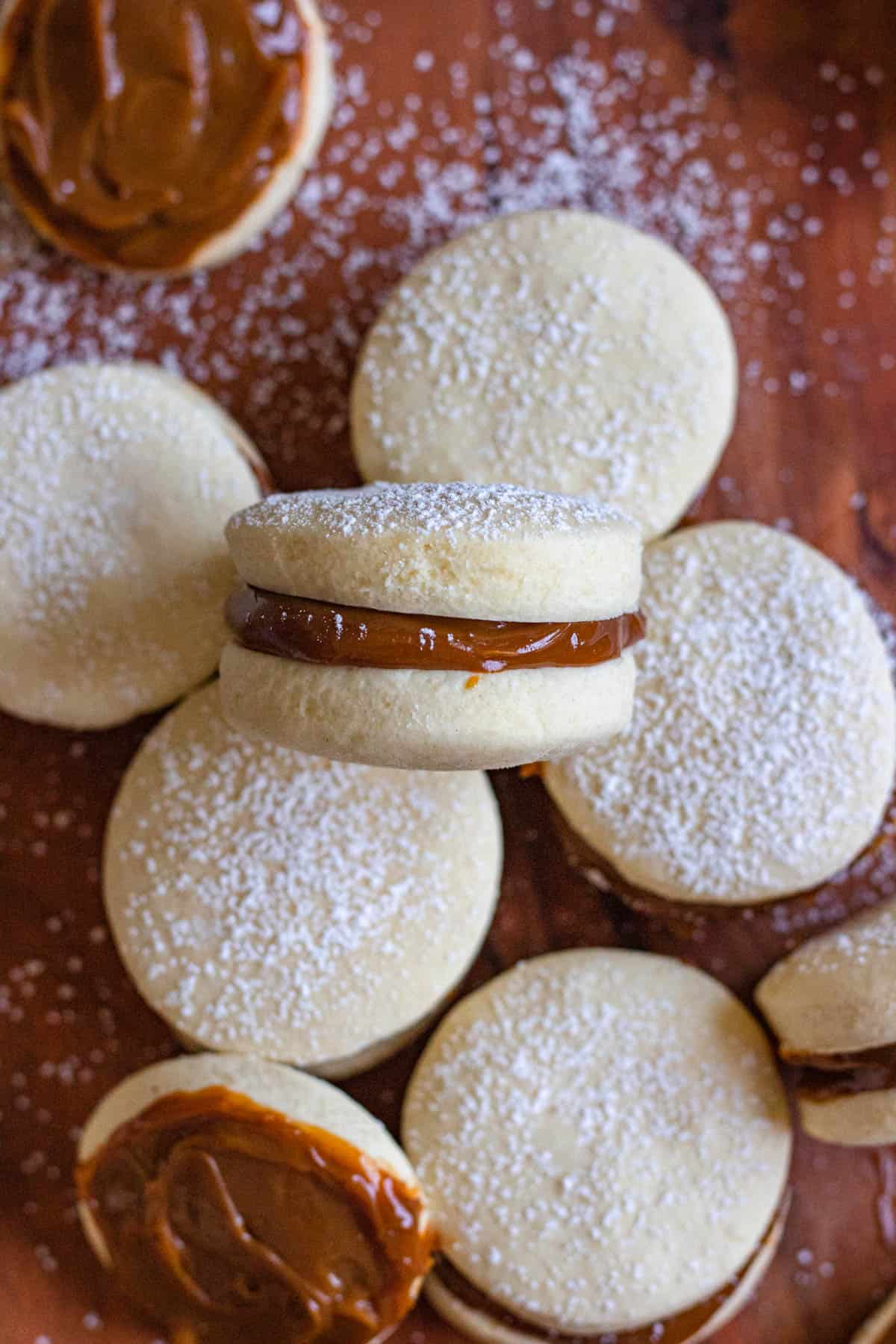
- Once the dough has been gathered into a ball, you can flatten it a little before wrapping and chilling it. Chilling it while flattened will help with rolling it out later.
- You can also cut the alfajores cookies into 1” circles and make double the cookies! Reduce the cooking time by a minute or two.
- Be sure not to overmix these cookies. The more you mix them and work with the dough, the tougher your cookie may turn out. You want to mix until just combined.
- Do not overstuff your cookies. While it sounds delicious, it will be difficult to keep your delicious treats together with too much filling on the inside.
- For beautifully made South American Sandwich Cookies, you can use a piping bag to pipe the dulce de leche onto one of the cookies. This will create a gorgeous sandwich without causing too much of a mess.
FAQs
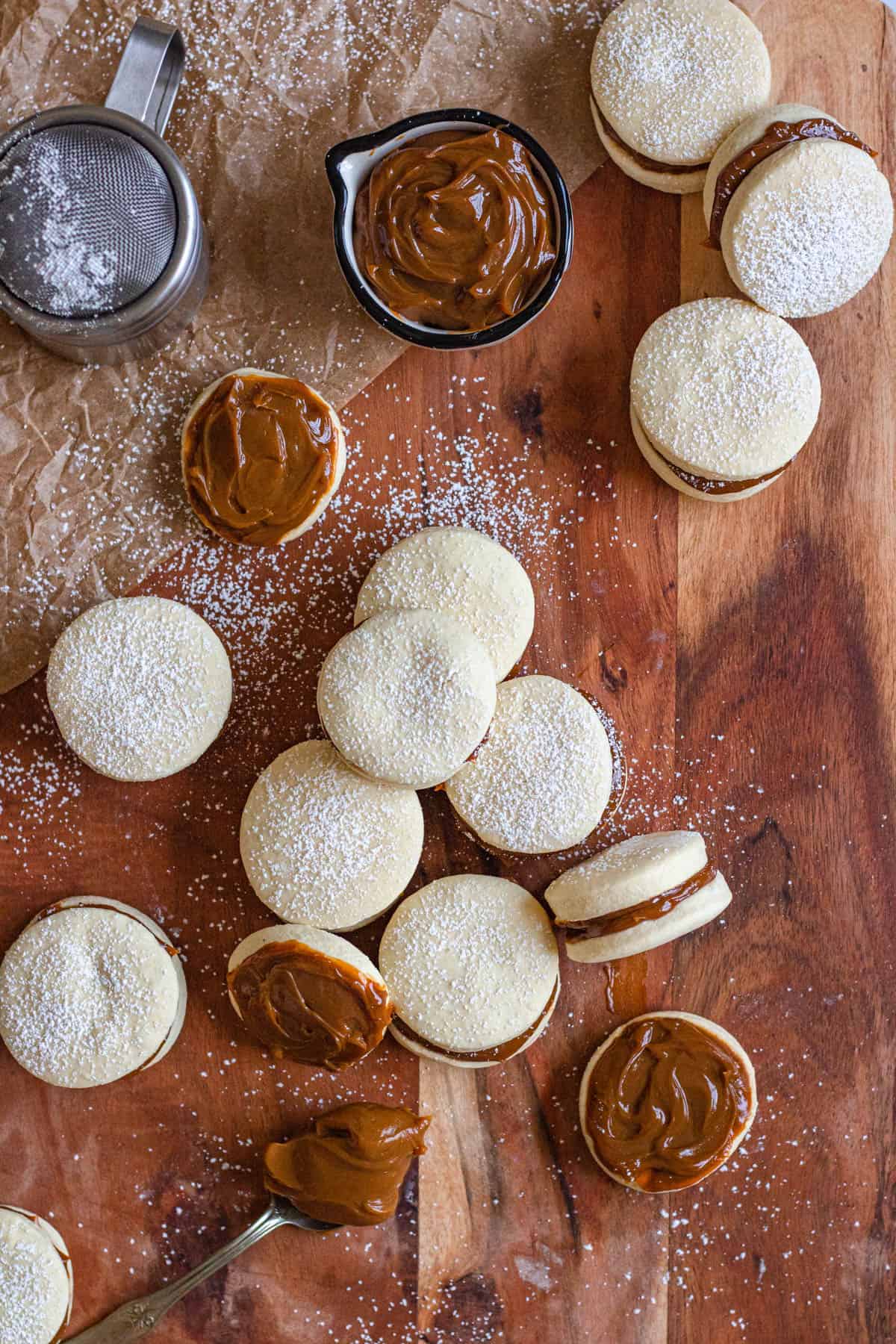
The chilling time with these cookies is very important. You must chill the cookies twice.
The first time helps the dough set so that it can be rolled and cut. The second time helps the fat to solidify further to keep it from spreading when baking.
If your cookies lose their shape when cooking you may have too little flour or you may need to chill longer.
You can make these traditional Latin American cookies ahead of time in a couple of different ways. You can mix the dough, wrap it in plastic wrap, and return to it the next day for rolling and cutting. Or you can bake the shortbread cookies and wait to add the filling.
Once you add filling to your cookies, they will soften a bit so it’s a good idea not to fill them too soon. You also don’t want to leave them out and allow them to dry out.
You can store alfajores in an airtight container at room temperature. They will last up to a week.
Did you enjoy this Easy Alfajores Recipe? If so, make sure to check out these other recipes I picked out just for you:
- Red Chimichurri
- Argentinian Chimichurri
- Italian Pistachio Cookie Recipe
- Butter Cookies from Egypt
- Pecan Snowball Cookies

Alfajores
Equipment
- Electric Hand Mixer
- Cookie Cutters
- Rolling Pin
- Wooden Spoon
- Oven Mitt
- Plastic Wrap
- Mixing Bowl(s)
Ingredients
- 7 tbsp unsalted butter, 100g, softened
- 1 cup powdered sugar, 100g
- 3 eggs, 2 full eggs + 1 yolk
- ½ tsp vanilla
- ¾ cup all-purpose flour, 100g
- 1 ½ cups cornstarch, 200g
- ½ tsp baking powder
- ½ tsp salt
- ¾ cup dulce de leche, 250g
Instructions
- In a large bowl, use an electric hand mixer to combine the 7 tbsp softened butter and 1 cup powdered sugar. Mix for about 2 minutes until light and fluffy.
- Once combined, add ½ tsp vanilla and eggs (2 whole eggs + 1 yolk). Mix again until combined.
- Add the ¾ cup all-purpose flour, 1 ½ cups cornstarch, ½ tsp baking powder, and ½ tsp salt. Use a wooden spoon or spatula to mix until everything is combined into a dough.
- You do not need to knead the dough, simply gather it together into a ball. Wrap the dough in plastic wrap and place in the fridge for an hour.
- Preheat the oven to 325 degrees Fahrenheit.
- When chilled, roll the dough out to ¼” thick. Then cut the alfajores into 2” circles.
- Place them on an unlined, ungreased cookie sheet and chill for an additional 5 minutes in the fridge to ensure they do not spread.
- Once chilled, place in the oven for 7-8 minutes until they are brown around the edges.
- Allow the cookies to cool, then fill them with dulce de leche and create sandwiches.
- Enjoy!
Notes
- Butter: It’s always a good idea to use unsalted butter when baking so you can control the amount of salt in the dish.
- Cornstarch: There is quite a bit of cornstarch in this recipe. The powdered sugar and cornstarch are what give the cookies a super light and airy texture that melts when you bite into them.
- Dulce de Leche: There are many brands of dulce de leche available for purchase. You want a very thick dulce de leche that won’t run off the side of the cookie. Look for pastry Dulce de leche or make your own using this recipe for Instant Pot Dulce de Leche!
- Once the dough has been gathered into a ball, you can flatten it a little before wrapping and chilling it. Chilling it while flattened will help with rolling it out later.
- You can also cut the cookies into 1” circles and make double the cookies! Reduce the cooking time by a minute or two.
- Be sure not to overmix these cookies. The more you mix them and work with the dough, the tougher your cookie may turn out. You want to mix until just combined.
- Do not overstuff your cookies. While it sounds delicious, it will be difficult to keep your delicious treats together with too much filling on the inside.
- For beautifully made South American Sandwich Cookies, you can use a piping bag to pipe the dulce de leche onto one of the cookies. This will create a gorgeous sandwich without causing too much of a mess.




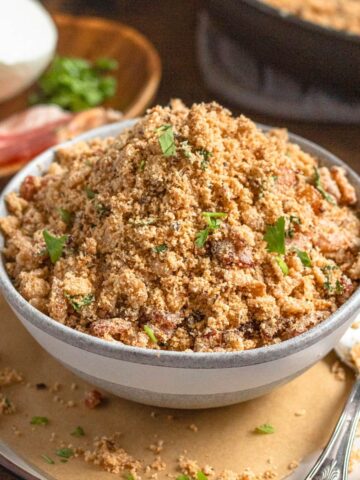




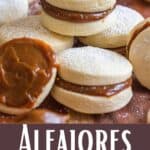
Ernesto says
The cornstarch is unnecessary. Regular all purpose flour works fine. Also, this recipe is best suited for sugar crazy Americans -60 g of sugar will give you the typical Argentinian flavor.